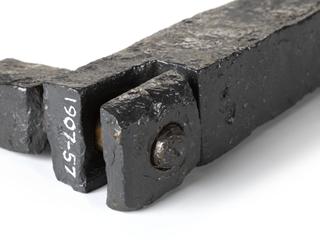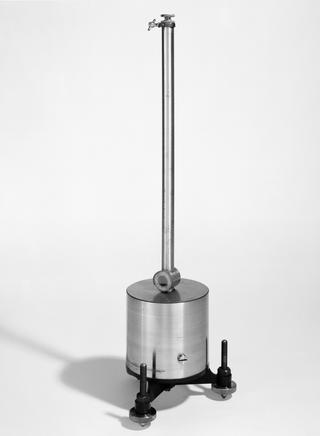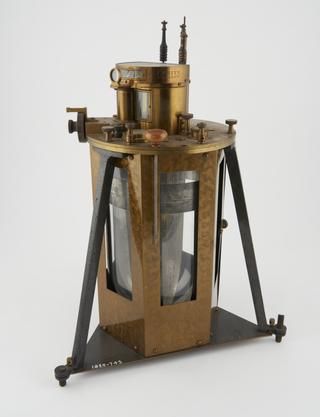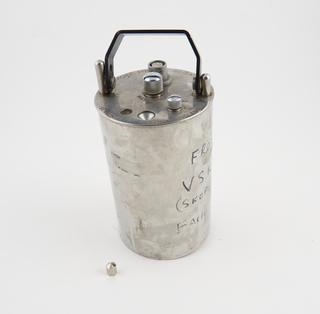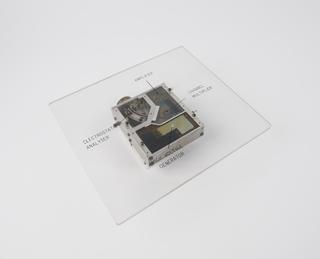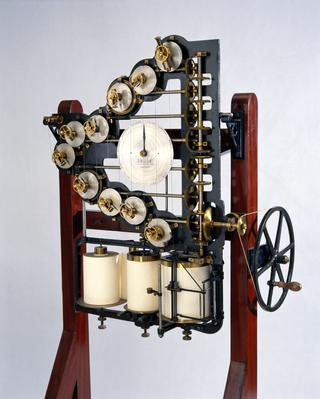
Model to Demonstrate Combination of Tidal Constituents, 1872
- Made:
- 1872 in United Kingdom
- designer:
- William Baron Kelvin Thomson

William Thomson's (later Lord Kelvin) original model for a tide predicting machine, Thomson, Baron Kelvin, William, United Kingdom, 1872.
Sir William Thomson, later Lord Kelvin, devised several machines that could analyse complex motion such as that of tides. This demonstration model was shown to the British Association to obtain funds for constructing a full-scale tide predictor. First the tides at a particular port were observed using a gauge over a period of time. The motion was then analysed into simple components. The tide predictor would then be set by adjusting the pulley positions to imitate those components, and the resulting motion would predict the tides. Tide predictors were used extensively in India in the late 19th century.
Details
- Category:
- Geophysics
- Object Number:
- 1881-12
- Materials:
- wood (unidentified), lead (metal), brass (copper, zinc alloy) and cord
- Measurements:
-
overall: 370 mm x 470 mm x 120 mm, , 2.425kg
- type:
- demonstration model
- credit:
- William Thomson (Lord Kelvin)
